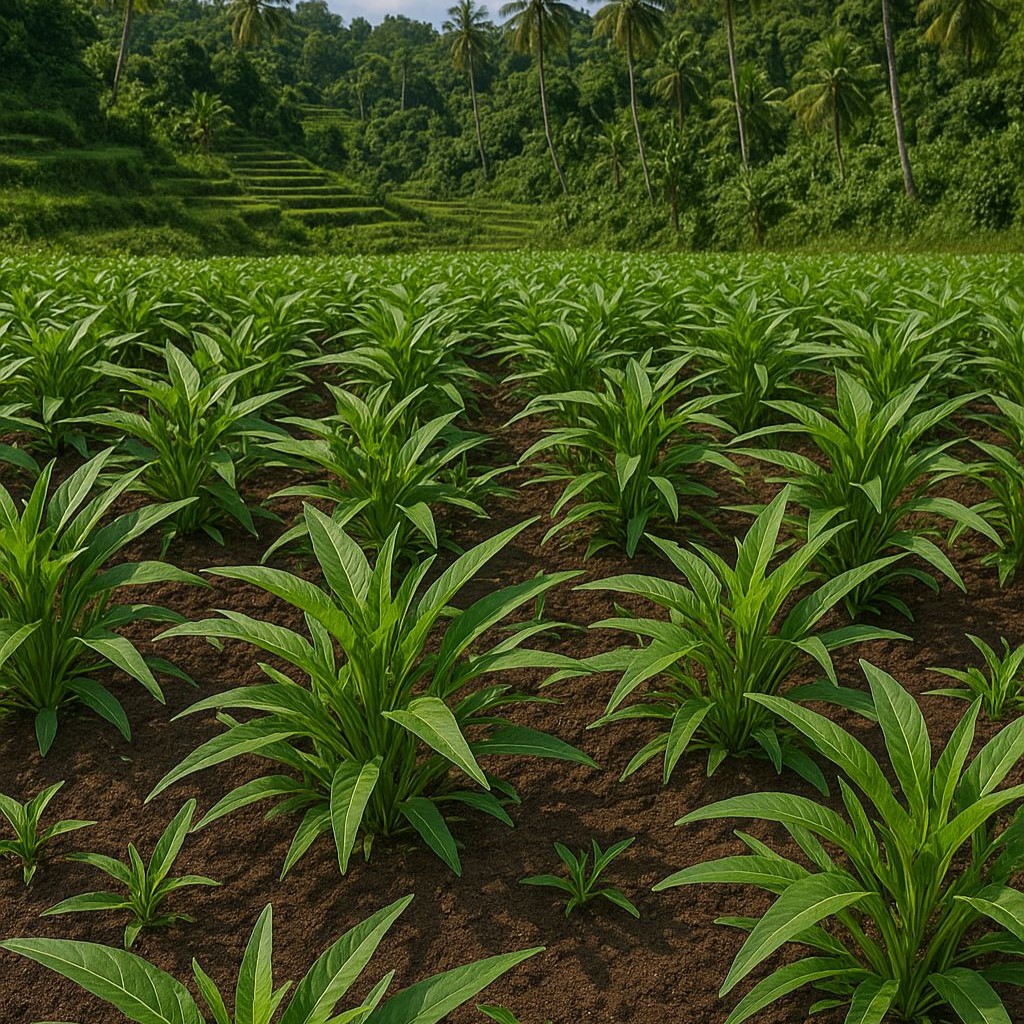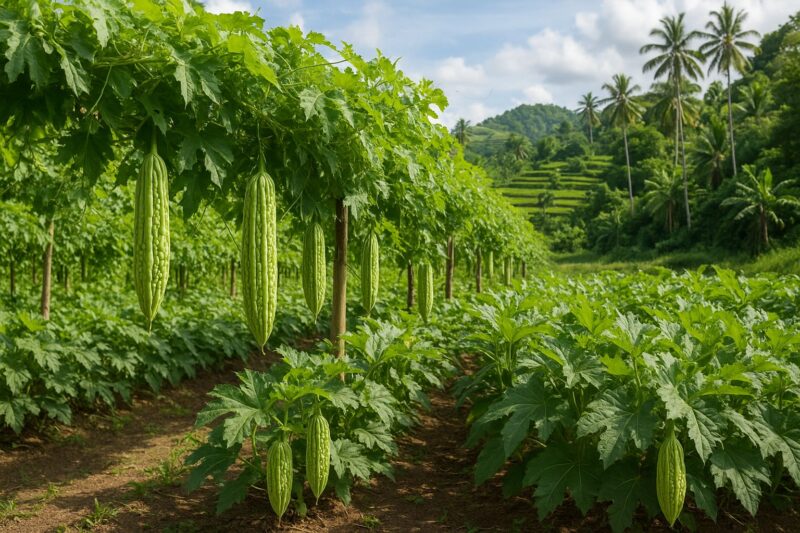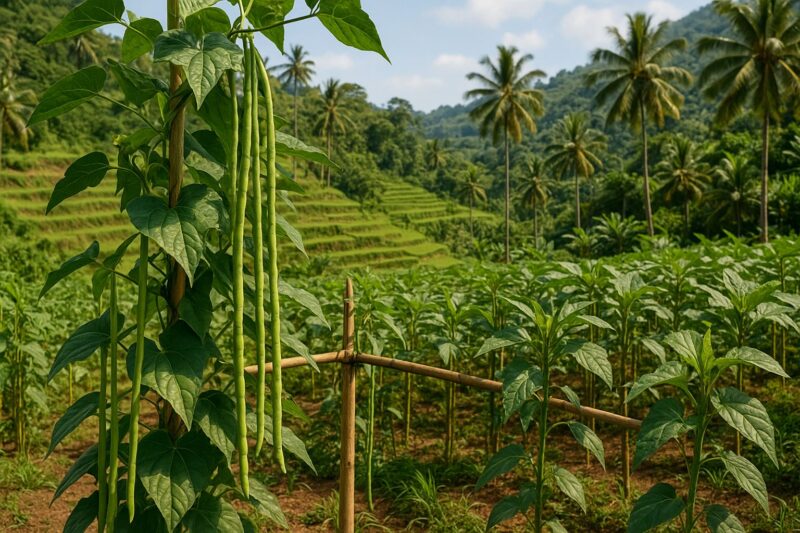Kangkong—water spinach—floats its way into almost every Filipino menu, from the sizzling adobong kangkong of Cavite to the garlicky stir-fry plates served in Manila’s street stalls. It’s fast-growing, forgiving in most soils, and yields harvests in just a few weeks. Yet, for all its reputation as a “plant anywhere” crop, kangkong has its own little quirks: overwatering can lead to root rot, direct sun may scorch tender shoots, and the ever-present threat of flooding in low-lying fields requires a bit of planning. Over several seasons in Bulacan—and with advice from friends in Iloilo and Davao—I’ve found a rhythm that works. Here’s what I’ve learned, for any backyard patch or small farm across the islands.
To begin, you need the right planting material. While many gardeners propagate kangkong from cuttings, I prefer buying certified seedlings from a trusted nursery—especially in regions prone to disease outbreaks, like parts of Laguna. In more remote barangays, local farmers often share cuttings of healthy, vigorous stems known to resist leaf blight. Whichever you choose, look for firm, bright green stems about twenty centimeters long, each with at least four nodes. Strip off any wilted leaves and snip the cuttings at a clean diagonal just below the lowest node.
Kangkong thrives in moist conditions—after all, it’s called water spinach—but “moist” doesn’t mean waterlogged. In Bulacan’s clay beds, I carve shallow furrows about ten centimeters deep and place each cutting horizontally, covering it lightly with soil so the nodes touch the earth. If you’re planting near a pond or in a flood-prone lowland—common in Pampanga—you can stake up a raised bed of compost-enriched soil where cuttings sit just above the usual water line. In coastal sandy loams around Cebu, mixing in rice hull charcoal helps retain moisture without suffocating the roots.
Planting time is flexible. In most of the Philippines, kangkong can be sown year-round, but I’ve noticed that planting just before the start of the dry season—around January to February—yields more tender, less fibrous leaves. The cooler nights slow down bolting (flowering), so you get an extra two to three weeks of quality harvest before the stalks mature too quickly. Conversely, a July planting can be a gamble: heavy rains may flood your beds for days, though some varieties shrug off standing water like a champ.
Sunlight needs balance. Too much shade and your kangkong grows leggy with sparse leaves; full midday sun can wilt young shoots. I aim for dappled shade—under coconut palms or next to taller crops like corn—so plants get four to six hours of gentle morning sun. If you’re gardening on a balcony or rooftop in Quezon City, positioning containers to face east ensures they catch the cooler light and avoid the harsh afternoon glare.
Fertilization is straightforward but worth thinking about. Kangkong is a heavy feeder, especially of nitrogen. I start with a base of well-rotted compost at planting, then side-dress every three weeks with decomposed chicken manure or a light sprinkle of urea. Some growers in Iloilo mix a tablespoon of fish emulsion into the irrigation water every two weeks, reporting more vigorous growth—but I found that invites aphids if overdone. Moderation, as always, is key.
Pest and disease issues are minimal but real. Leaf miners leave tiny winding tracks in the foliage; a quick pinch of affected leaves usually keeps them from spreading. Snails nibble young shoots after rain, so I patrol with a flashlight at dawn (a chore that doubles as exercise). In damper areas, I once had a run-in with root rot. The cure? Lift a few plants, mix burnt rice hull into the bottom of the hole, and replant higher. Since then, I’ve never lost an entire row to soggy beds.
Harvesting kangkong is perhaps the most rewarding part—and the most forgiving. You can begin cutting when the plants reach about twenty centimeters tall, snipping stems just above the second or third node. New shoots emerge in days, so you can harvest every seven to ten days for months. I’ve even heard of commercial growers in Mindanao clocking ten to twelve harvests per planting cycle, though my personal record is closer to eight. Each time I harvest in the early morning—before the sun climbs too high—the leaves stay crisp in the next day’s kinilaw or sopas.
One memorable season in Bulacan, I experimented with planting kangkong alongside okra in the same raised beds, hoping the okra’s height would provide shade during heat waves. It worked surprisingly well; kangkong stayed lush, and the experimental shade—plus extra compost—yielded a double harvest. That kind of small-scale intercropping might be a tangent, yes, but it illustrates how versatile this crop can be.
Whether you grow kangkong in ponds, raised beds, pots, or open fields, mastering soil moisture, light exposure, and simple pest checks will bring you fresh, tender greens in a matter of weeks. It may not be as glamorous as heirloom tomatoes or dragon fruit, but for reliable returns and everyday cooking, few crops match kangkong’s ease and utility.
I’m open for consulting and speaking opportunities on sustainable vegetable production and urban agriculture across the Philippines—drop me a line if you’d like to learn more.
#Kangkong #WaterSpinach #PhilippineFarming #SustainableAg #UrbanGardening #ConsultingAvailable #SpeakingOpportunities




